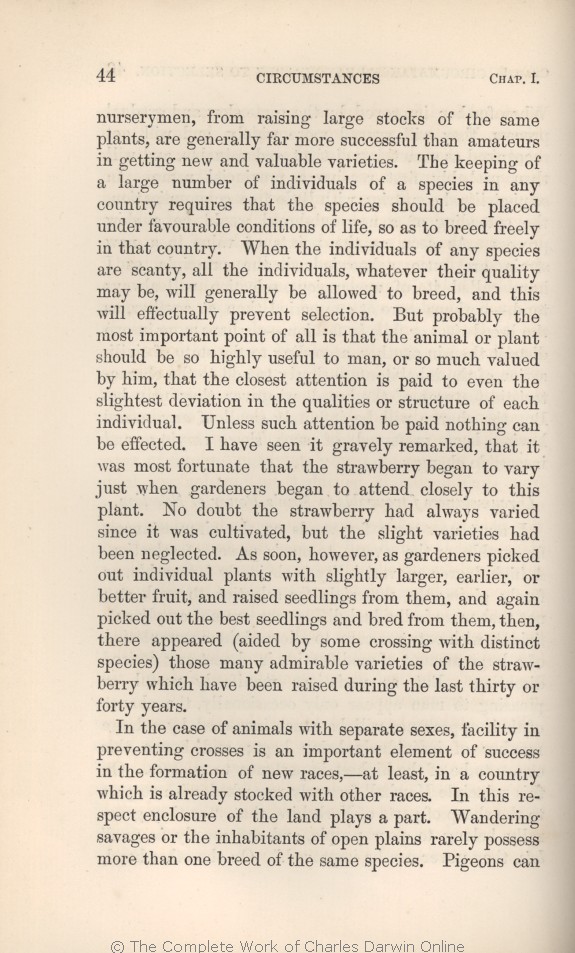nurserymen, from
raising | raising 1859 1860 1861 1866 1869 | | keeping 1872 |
| plants, 1859 1860 1861 1866 1869 | | plant, 1872 |
| getting 1859 1860 1861 1866 1869 | | raising 1872 |
| 1 blocks not present in 1859 1860 1861 1866 1869; present in 1872 | | A large number of individuals of an animal or plant can be reared only where the conditions for its propagation are favourable.
|
| of any species 1859 1860 1861 1866 1869 |
| OMIT 1872 |
| the individuals, 1859 1860 1861 1866 1869 |
| will be allowed to breed, 1872 |
| will generally be allowed to breed, 1859 1860 1861 1866 1869 |
| OMIT 1872 |
| point of all is 1861 1866 1869 |
| point of all, is, 1859 1860 |
| element is 1872 |
| useful to man, or so much 1859 1860 1861 1866 1869 |
| OMIT 1872 |
| him, 1859 1860 1861 1866 1869 | | man, 1872 |
| is 1866 1869 1872 | | should be 1859 1860 1861 |
| deviation 1859 1860 1861 1866 1869 | | deviations 1872 |
| the 1859 1860 1861 1866 1869 | | its 1872 |
| structure 1859 1860 1861 1866 1869 | | structure. 1872 |
| of 1859 1860 1861 1866 1869 | of 1872 |
| each 1859 1860 1861 1866 1869 | each 1872 |
| individual. 1859 1860 1861 1866 1869 | individual. 1872 |
| closely 1859 1860 1861 1866 1869 | closely 1872 |
| then, 1859 1860 1861 1866 1869 | | then 1872 |
| there appeared (aided by some crossing with 1859 1860 1861 1866 1869 |
| (with some aid by crossing 1872 |
| which have been raised 1859 1860 1861 1866 1869 |
| were raised which have appeared 1872 |
| thirty or forty years. 1859 1860 1861 1866 1869 |
| half-century. 1872 |
|









